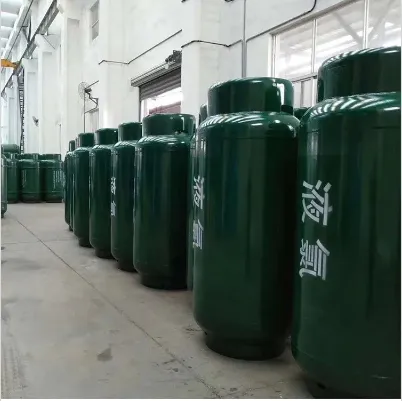
Glyphosate
Mar . 04, 2025 09:39
Back to list
Glyphosate
Glyphosate usage has long been a topic of discussion, particularly in agricultural circles. Its role as a broad-spectrum herbicide has been both lauded for its effectiveness in controlling weeds and scrutinized over potential health and environmental impacts. Understanding the nuanced perspectives surrounding glyphosate is crucial for anyone involved in agriculture, landscaping, or gardening. Below, this article delves into the real-world experiences and expert insights on glyphosate, exploring its applications, benefits, and challenges.
Ensuring trustworthiness in glyphosate applications involves transparency and adherence to safety protocols. The agricultural industry, alongside policymakers, continuously updates guidelines to reflect the latest scientific findings. Farmers are increasingly adopting precision agriculture techniques, which enable them to apply glyphosate more selectively, minimizing environmental impact while maximizing effectiveness. This precision application is particularly important in protecting nearby non-target crops and preserving biodiversity. In terms of product application, meticulous adherence to labeling instructions is paramount. Protective gear, proper storage, and careful handling are essential for safety. Tractor-mounted sprayers and knapsack sprayers offer varied application methods, with the latter providing precision for smaller plots or targeted areas. Product formulations may vary, with some products designed for pre-emergent weed control, while others are best for post-emergent application, reinforcing the need for users to choose products that best match their specific needs. As technological advances continue, the future of glyphosate usage might include even more refined approaches, such as the integration of AI and drone technology in weed management. These innovative solutions could help optimize glyphosate application, reduce usage rates, and further mitigate resistance issues. The commitment to evolving practices ensures that glyphosate retains its place as a vital tool in modern agriculture while addressing environmental and health concerns. In conclusion, glyphosate usage embodies a complex interplay of benefits, considerations, and evolving best practices. Its role in agriculture is undeniable, with significant advantages in no-till farming and weed control. Expert advice and regulatory oversight are key to sustaining its application without compromising human health or environmental safety. As the industry continues to innovate and research progresses, the dialogue surrounding glyphosate remains a pivotal part of agricultural advancement, reflecting both its challenges and indispensability.


Ensuring trustworthiness in glyphosate applications involves transparency and adherence to safety protocols. The agricultural industry, alongside policymakers, continuously updates guidelines to reflect the latest scientific findings. Farmers are increasingly adopting precision agriculture techniques, which enable them to apply glyphosate more selectively, minimizing environmental impact while maximizing effectiveness. This precision application is particularly important in protecting nearby non-target crops and preserving biodiversity. In terms of product application, meticulous adherence to labeling instructions is paramount. Protective gear, proper storage, and careful handling are essential for safety. Tractor-mounted sprayers and knapsack sprayers offer varied application methods, with the latter providing precision for smaller plots or targeted areas. Product formulations may vary, with some products designed for pre-emergent weed control, while others are best for post-emergent application, reinforcing the need for users to choose products that best match their specific needs. As technological advances continue, the future of glyphosate usage might include even more refined approaches, such as the integration of AI and drone technology in weed management. These innovative solutions could help optimize glyphosate application, reduce usage rates, and further mitigate resistance issues. The commitment to evolving practices ensures that glyphosate retains its place as a vital tool in modern agriculture while addressing environmental and health concerns. In conclusion, glyphosate usage embodies a complex interplay of benefits, considerations, and evolving best practices. Its role in agriculture is undeniable, with significant advantages in no-till farming and weed control. Expert advice and regulatory oversight are key to sustaining its application without compromising human health or environmental safety. As the industry continues to innovate and research progresses, the dialogue surrounding glyphosate remains a pivotal part of agricultural advancement, reflecting both its challenges and indispensability.
Prev:
Next:
Latest news
-
Uncover the Benefits of Sodium ChlorateNewsJun.24,2025
-
Sodium for Sale: Your Essential ResourceNewsJun.24,2025
-
Raw Materials in Chemical IndustryNewsJun.24,2025
-
Potassium Hydroxide: Versatile Solutions for Your NeedsNewsJun.24,2025
-
Organic Pesticides and Chemical Raw Materials: Building a Sustainable FutureNewsJun.24,2025
-
Discover Premium Chlorine Tablets TodayNewsJun.24,2025
-
Zinc for Sale: Your Essential ResourceNewsJun.04,2025
Hot Products




















